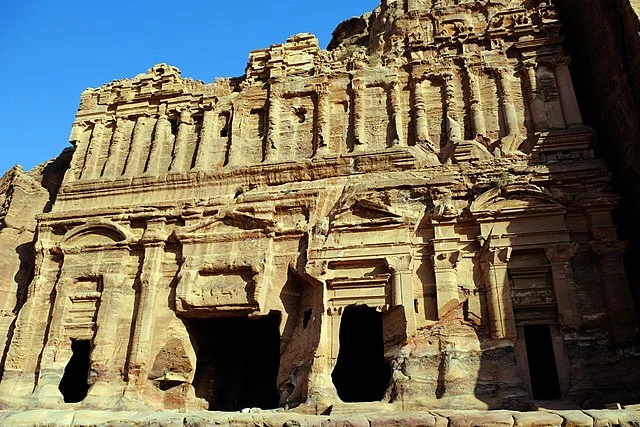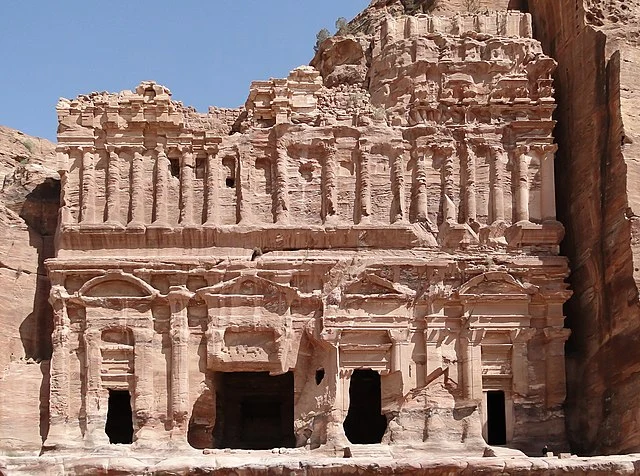The Palace Tomb, located in Petra, Jordan, dates back to the 1st century AD. It is one of the most iconic structures in Petra, a city carved into the red sandstone cliffs by the Nabataeans. The Nabataeans, an ancient Arab people, controlled trade routes across the Arabian Peninsula and amassed significant wealth. This wealth enabled them to create Petra, a city known for its stunning rock-cut architecture.
Get your dose of History via Email
The Palace Tomb is part of the Royal Tombs complex, which includes the Urn Tomb, the Corinthian Tomb, and the Silk Tomb. These tombs were likely constructed for the elite of Nabataean society, possibly even for the kings themselves. The grandiose nature of these tombs reflects the social hierarchy of the time.
Architectural Features

The Palace Tomb stands out for its monumental size and intricate design. The façade measures approximately 49 meters wide and 46 meters high, making it one of the largest tombs in Petra. It is characterized by a series of four stories, each with distinct architectural elements.
The lower level features large doorways and windows, likely leading to burial chambers. Above this, three more levels include a combination of columns, niches, and arches. The topmost level is adorned with a central triangular pediment flanked by two smaller ones, giving the tomb a palace-like appearance.
Cultural Significance
The Palace Tomb is not only an architectural marvel but also a symbol of the Nabataean culture. The tomb’s design reflects a blend of Nabataean and Hellenistic influences, illustrating the cultural exchange that occurred due to Petra’s position along key trade routes. The use of columns, arches, and pediments suggests a familiarity with Greco-Roman architectural styles, which were likely introduced through trade and interactions with neighboring cultures.
The grandeur of the Palace Tomb indicates the importance of the individual buried within. Although the identity of the tomb’s occupant remains uncertain, the tomb’s size and location within the Royal Tombs complex suggest it was intended for a person of high status.
Archaeological Findings

Archaeological excavations around the Palace Tomb have yielded valuable insights into Nabataean burial practices. The tomb likely served as a family mausoleum, with multiple burials over time. Researchers have discovered various artifacts, including pottery, jewelry, and inscriptions, which provide clues about the tomb’s occupants and the broader Nabataean society.
Inscriptions found near the tombs have helped date the structures and understand their original purposes. Some scholars suggest the tombs may have been repurposed for other uses, such as Christian churches, during the Byzantine period.
Conclusion
The Palace Tomb remains a significant monument in Petra, showcasing the architectural and cultural achievements of the Nabataeans. Its grandeur, design, and historical context make it a subject of ongoing interest for archaeologists and historians. The tomb not only provides a glimpse into the past but also continues to inspire awe in visitors and scholars alike.
Soure:
Wikipedia

